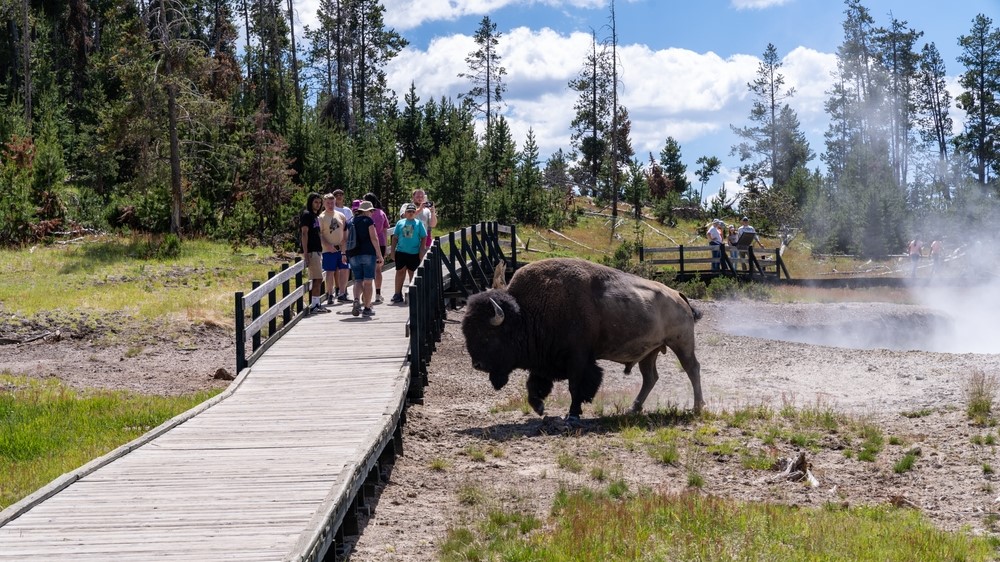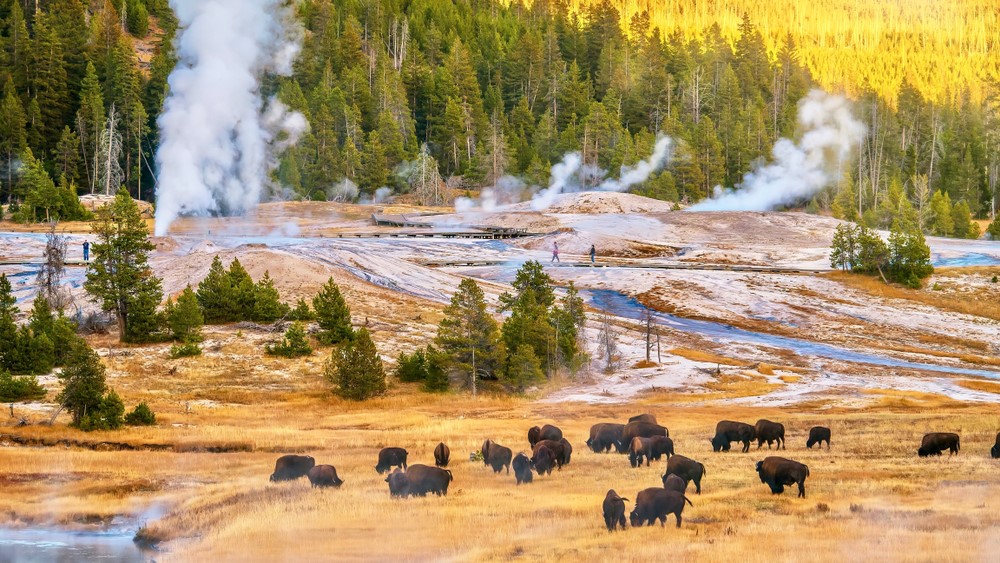
There have been three people gored by bison in a single month at the park. Visitors were warned that approaching too close can cause bison to charge.
On Wednesday, a 71-year-old woman from Pennsylvania was gored by a bull bison at Storm Point. She was taken to the hospital with non-life threatening injuries. A bull charged at a man and his family on a boardwalk near Old Faithful on June 27. The man was injured in his arm and was taken to the hospital.
The first incident of the year occurred on May 31, when a 25-year-old woman from Ohio was attacked near a boardwalk at Black Sand Basin, just north of Old Faithful. At the time it was mistakenly reported that she had died, she had sustained a puncture wound and other injuries.
American bison (Bison bison) are the largest land mammals in North America; males, or bulls, can grow up to 8.2 feet tall at the shoulder and weigh up to 2,000 pounds, and their horns can grow to a maximum length of 2 feet. The bison have large shoulder humps made of massive neck muscles that help them shovel a path through deep winter snow. The mammals are three times faster than a human can run and can reach a top speed of 55 km/h.
There are secrets of a mystery sandwich beneath the park.
According to the National Park Service, bison are more likely to hurt visitors than any other animal in the park. During attacks, bison gore people with their horns, before throwing them into the air with their powerful neck muscles, as seen in this video. Despite the strength and size of the animals, these attacks are usually just a warning shot from the animals.
There has been a period of increased attacks in the past. According to a report by the CDC, between May and July 2015, five people were injured by bison. 33 people were injured in 1983 and 1985 when the highest number of attacks took place. In Utah's Antelope Island State Park, one individual was involved in two separate attacks within three months of each other.

When people approach closer than they should, bison attack them. People are warned by the National Park Service to stay at least 75 feet away from bison, especially around campsites, roads, walkways and car parks where the animals are more stressed. According to the National Park Service, the three people who were recently attacked in Yellowstone, as well as family members or friends who were with them at the time, were much closer to the animals than the recommended limit when they were goRED.
People are trying to get closer to bison to take pictures for social media. One person who was injured by a bison in 2015 admitted to taking a selfies with the bison that attacked them.
There has been an increase in visitors to national parks since the easing of restrictions from the COVID-19 Pandemic. It is not clear if this is related to bison attacks.
The bison were in danger of becoming extinct by the 20th century. There were only two dozen bison left in the park in the early 20th century. According to the National Park Service, there are now 5,450 bison in the park as of the summer of 2021.
The challenge for park officials is to keep the bison population under control. Due to the destruction of property and the transmission of diseases to livestock, bison are free-roaming and often try to migrate across park boundaries, which can cause conflict with locals. In order to prevent the population from growing, officials at the park relocated bison to other parks.
It was originally published on Live Science